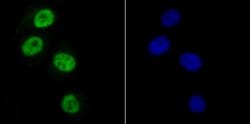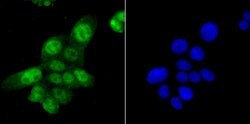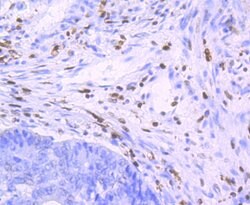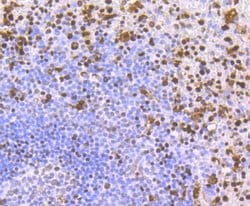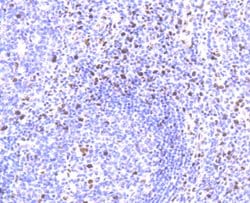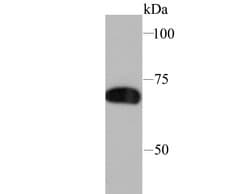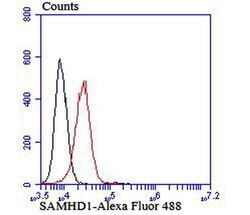Learn More
Invitrogen™ SAMHD1 Recombinant Rabbit Monoclonal Antibody (JU56-04)


Rabbit Recombinant Monoclonal Antibody
Supplier: Invitrogen™ MA532810
Description
Recombinant rabbit monoclonal antibodies are produced using in vitro expression systems. The expression systems are developed by cloning in the specific antibody DNA sequences from immunoreactive rabbits. Then, individual clones are screened to select the best candidates for production. The advantages of using recombinant rabbit monoclonal antibodies include: better specificity and sensitivity, lot-to-lot consistency, animal origin-free formulations, and broader immunoreactivity to diverse targets due to larger rabbit immune repertoire.
This gene may play a role in regulation of the innate immune response. The encoded protein is upregulated in response to viral infection and may be involved in mediation of tumor necrosis factor-alpha proinflammatory responses. Mutations in this gene have been associated with Aicardi-Goutieres syndrome.
Specifications
| SAMHD1 | |
| Recombinant Monoclonal | |
| 1 mg/mL | |
| TBS with 0.05% BSA, 40% Glycerol and 0.05% sodium azide; pH 7.4 | |
| Q9Y3Z3 | |
| SAMHD1 | |
| Synthetic peptide within Human SAMHD1 aa 577-626. | |
| 100 μL | |
| Primary | |
| Human | |
| Antibody | |
| IgG |
| Flow Cytometry, Immunohistochemistry (Paraffin), Western Blot, Immunocytochemistry, Western Blot | |
| JU56-04 | |
| Unconjugated | |
| SAMHD1 | |
| CHBL2; DCIP; Dendritic cell-derived IFNG-induced protein; deoxynucleoside triphosphate triphosphohydrolase SAMHD1; dNTPase; E330031J07Rik; EGK_02438; HDDC1; hSAMHD1; IFN-gamma induced; interferon-gamma-inducible protein Mg11; Mg11; Mg21; Monocyte protein 5; MOP5; MOP-5; mSAMHD1; RP1-132F21.1; SAM and HD domain containing deoxynucleoside triphosphate triphosphohydrolase 1; SAM domain and HD domain 1; SAM domain and HD domain, 1; SAM domain and HD domain-containing protein 1; Samhd1; SBBI88 | |
| Rabbit | |
| Protein A | |
| RUO | |
| 25939 | |
| Store at 4°C short term. For long term storage, store at -20°C, avoiding freeze/thaw cycles. | |
| Liquid |
Your input is important to us. Please complete this form to provide feedback related to the content on this product.
